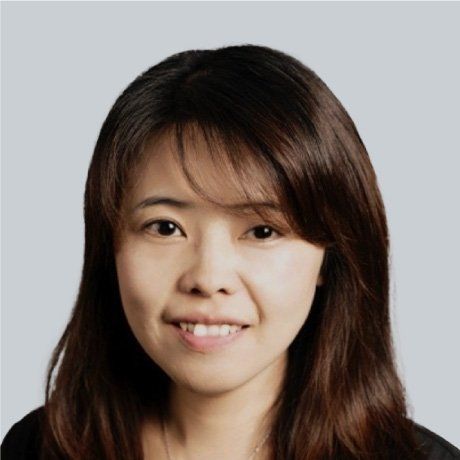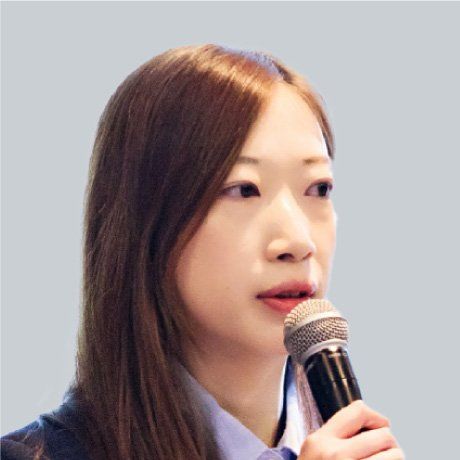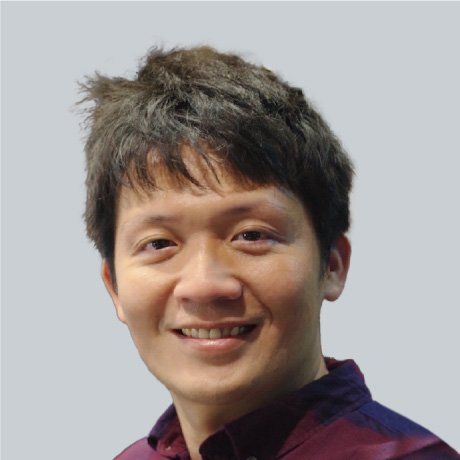Matt Dentino
Director of IIoT AOline Sales, Advantech North America
InnoTalks > Industrial IoT insights. Monthly video on-demand
November 2021
Factory and manufacturing operations face the continual struggle of accurate data collection from distributed equipment, which is imperative for preventative maintenance and condition-based monitoring—not to mention further Big Data analysis. To meet these challenges, Advantech and Microsoft have worked in partnership on integrated edge-to-cloud solutions to help with the Digital Transformation of factory facility management, such as Advantech’s DeviceOn/BI industrial IoT platform with Microsoft Azure Cloud Computing Services. In our latest Advantech InnoTalk session, we talk in detail with leaders from the Asia IoT Partner Ecosystem group of Microsoft Corporation, as well as leaders from the Industrial IoT Product Group of Advantech, about the rise of Edge-as-a-Service (EaaS) solutions, overcoming common edge-to-cloud challenges, and the ins and outs of the DeviceOn/BI platform.
[MUSIC PLAYING] - Welcome to Advantech's InnoTalks. I'm Matt Dentino, your host. Today's topic is another great one in our series all about digital transformation of the workspace. We're going to talk about Edge computing and the integration of device management and business intelligence tools across organizations worldwide.
We'll talk about how these capabilities are making us more efficient, which in turn makes our organizations more effective. We'll see how this transformation is sparking new innovations in manufacturing, which are then leading to better products, higher quality, enhanced safety, and all while lowering costs.
We'll also touch on how all of this together is driving a deeper relationship with our customers, both internally and externally, and relieving many of the typical growing pains our organizations might encounter during a technology expansion like this one.
Now with me to unpack all of this today, from Microsoft Corporation Azure IoT Ecosystem and global partner solutions team, we have Connie Chien, Senior IoT Solution Specialist, and Tommy Wu, Senior IoT Solution Architect. Connie and Tommy, welcome.
In addition, from Advantech we have joining us Cindy Huang and a product manager from our industrial IoT group, and Jack Yang, software product manager from our industrial IoT group. Cindy and Jack, welcome and thank you for joining the conversation today.
Now Jack since I introduced you last, let me come to you with the first question. There's a lot of ground to cover with this topic and a good deal of it revolves around software and services. As a software product manager for our IoT group, lay out the groundwork for us, if you will, on the software side of this digital transformation.
What has Advantech introduced to help in these areas of efficiency, and effectiveness, safety and the like? And what are the points of pain that these solutions are going to help relieve from organizations who are going through this digital transformation?
- Right. Thanks Matt for the question. The solution Advantech would like to introduce is DeviceOn/BI. It is a business integration platform that helps businesses to integrate and accelerate distributed devices operation and maintenance management over the cloud.
With the aid of Microsoft Azure, all the fundamental infrastructure works and development time has been minimized, letting us to focus on what is essential for the field side as well as the scope that is required for operation management.
The fundamental hierarchy of the OT data to application services is as shown based on three major software solutions, EdgeLink, WebAccess/SCADA, and DeviceOn/BI. A solutions to each layer allows domain partners to develop radical needs among them transforming traditional system integrator business model from pure configuration set up to operation services.
DeviceOn/BI consists of two major parts, device management platform, and the data management platform. I will focus on the scope of device management platform today that allowed customers to manage connected Edge devices easily over the cloud. The partners can remotely configure and distribute the settings on a centralized platform. Let me show you the functions we cover in device management portal.
We have seven major function blocks in device management. Connection configuration is a must with real time change and status of the device. Depending on the type of device connected, firmware OTA platform computers can application remote installations can be done. I will briefly show some of the screenshots of the functions in the following pages.
The real time monitoring gives you a glimpse of the device status. From IO readings to platform system information, the trend provides the overall quick look up of the device. In the firmware OTA function, we can select the version that applies to the device best and reveal the installation history.
For platform computers, additional private repository can be added to protect customers or application as well as installed applications or drivers that applies to generic models. The installation history also provides the records of what has been done to the device. The function page is shown previously is only a part of what DeviceOn/BI can cover.
All the device information can be adapted to DeviceOn/BI data management portal where you can have organization view and more functions such as alarms, notifications, and enhanced visualization using WISE-PaaS dashboards. All of these functions are built on WISE-PaaS cloud platform as well as Microsoft Azure. In general, we use Azure Kubernetes service and storage application combinations to fulfill DeviceOn/BI.
To summarize, this page shows the major components and blocks in DeviceOn/BI on Azure, providing us three major benefits. The connectivity. The entrance for all connections requires high security and reliability. By using Azure IoT hub, we can focus on the data after connection without any noises. The high self-provisioning of resources that can easily be tailored to fit the market change which gives us agility to make necessary changes at any instance.
Finally, scalability is extremely important because adjustments occurs every day in the IoT world. The Autoscale Cosmos DB from Azure provides the tendency that allows to process data from various dimensions whenever it is needed. This is what I would like to share about digital transformation using DeviceOn/BI. Matt.
- Thank you for that, Jack. With that as our background, I'd like to direct the next question to Connie and Tommy from Microsoft. All the software infrastructure that Jack was just telling us about relies on cloud services.
And in order to be effectively implemented, I would like to ask you to tell us from Microsoft's point of view, what's driving this move to cloud services? How do you see it specifically impacting manufacturing? And talk to us about what types of companies are embracing these changes and how Azure functions as the heart of this transformation.
- Thank you, Matt Yes. As you mentioned, I'm going to share some insights in the Microsoft point of view around manufacturing industry, especially how COVID-19 changed the industry and the drive for digital transformation. Digital transformation is changing the entire manufacturing industry. We have seen a few trends in the market and that are shared at IDC. Let me highlight a few that I believe are particularly interesting to you.
The first one are listed here states that by 2030, 65% of organizations will save 10% costs by digitalizing their production lines using IoT and machine learning. The interesting thing is that this data point came in December of 2019 before COVID-19 outbreak. After the pandemic, we believe manufacturers will even more understand the importance of digitalization and how it can help to transform their business.
Another interesting one is how many manufacturers are turning to automation to address the skill gap that is it in the industry. This why is very important because the goal of technology is to enhance the productivity and empower the workforce. And Azure can help with on several fronts. Manufacturers are looking for ways to make their workers more efficient and help learn to learn this new way of working around digital and Azure can help with this significantly.
Based on Microsoft analysis about how the COVID-19 outbreak directly impacted the manufacturing industry, we have identified five items that we are thinking worth mentioning here. After pandemic, we are seeing significant need for remote collaboration and productivity across the organization and throughout the extended value chain.
With so much dependent on technology and the remote operation, there’s a significant need for enhancing privacy and security to support remote work and collaborate anywhere any time for critical infrastructure. We are also seeing accelerated deployment of intelligent robotic process automation and the low-code technologies to keep up with re-factory-ing and the customer service demands.
AI driven predictive analytics and the digital twins will be used for data modeling, risk assessment, and execution of a resilient supply chains. Future product in the process development will be accelerated by digital twins, mixed reality, specialists compute, and the digital feedback loops. The digital feedback loops brings us a concept that help us understand how data can be used to help all types of processes and operations for a manufacturing company.
There are four key items that we are seeing very critical for any manufacturing company. They are customers, employees, products, and operations. Company needs to think about how to leverage data to empower customer experience and build long term relationships, how to use data and train employees to provide proactive customer support with the optimized scheduling and agent management, to accelerate product innovation and establish continuous improvement, and to enable intelligent supply chain management and operational efficiency.
As we said, recent competitive pressures in the COVID-19 global pandemic have added to the urgency of digital transformation across manufacturing. As a response to this environment, manufacturers has turned to Microsoft Cloud Azure. In Azure, partners can depend on all that Edge offers and tailored to the needs of manufacturers.
First, we are going to make sure we have technologies like meeting your needs today but also tomorrow. With over 1,000 capabilities released in the last year, industrial organizations have access to the latest cutting edge technologies allowing them to focus on their domain expertise and recover new efficiencies.
Also, it is important for you to be able to be on your own terms with the frameworks, the tools, and applications that you need to drive value for your organization. With our open platform, regardless of in-house, partner, or Microsoft applications, Edge will support this and you can work with the technology of your choice.
Operate hybrid seamlessly. Manufactures rely on a hybrid approach to benefit from their investment and at the same time, unlocking the innovation of the cloud. Azure takes a comprehensive approach and offers a unique hybrid capabilities that give manufacturers the flexibility to innovate anywhere in the environment.
And then in the last, of course it's trust. Nothing is more important than trust, particularly when you are talking about the cloud. We spend $1 billion a year on cyber security with 3,500 cyber security engineers who are constantly monitoring your data for threats. Then there is compliance. Azure has the best industry compliance than any other cloud provider.
Advantech is our very important and strategic partner. We have been working together for a long time on IoT. Advantech provides comprehensive IoT solutions, including sensor nodes, Edge computing, software, and the cloud service for vertical applications.
Today, Advantech built up device management and the business integration platform, DeviceOn/BI, on top of Azure, to manage connected devices remotely and to provide centralized management features with safety and efficiency.
It can be adopted and integrated very easily to accelerate your digital transformation journey. Following our solution architect Tommy will introduce the Azure IoT services that Advantech used to build up DeviceOn/BI. Let's welcome Tommy.
- This is Tommy. I'm from IoT team and today I would like to introduce that what’s the Azure IoT service we can leverage to build up the DeviceOn/BI. So from the first diagram, we can see this is a block diagram which describe that we leverage some Azure service like the AKS, Cosmos DB, or Redis as well.
So let's move on the next page. And from the Microsoft IoT comprehensive portfolio, we have lots of services our solutions. From the top to the bottom, we can see that we have the vertical and we also have the IoT social level. And we have every single service and we also cover the Edge devices. So in the IoT portfolio, we cover from end to end, from device to the cloud.
For the IoT, we call the Reference Architecture. And probably from this diagram
where we can see that we divide the architecture into the three parts. We call these Things, Insights, and Actions. And which points back to the three main category. From the Things level is the device side. So we can see we have Advantech Edge devices, which can leverage our SDK to connect to our cloud side service.
So when the device connect to the cloud side, we have the Insight PaaS. Insight PaaS including some of the IoT Hub, broker, data service, which can built up the DeviceOn/BI no matter about the dashboard, how about the processor engine, or any datastore to keep the data in base. And also we have the Actions.
What's the Actions? Action is when we based on the data, we can trigger some event to alert or notify some users to do the actions to fix their errors, and will have some email the person to remind them to do something. So that's the IoT Reference Architecture.
And also the key part of the three category we will introduce the service we call the IoT Hub. IoT Hub have some key functions. They have the device side and the service side. From device side, we have the flexible SDK which can install and across multiple platform. And that can use that SDK to connect to the cloud easily. When they connect to the IoT Hub, then the back-end application can use the service SDK and the API to retrieve the data and to do their required application. That is the DeviceOn/BI dashboard that will retrieve data from our IoT Hub. So they can make their own dashboard and the customer can also customize their own dashboard flexibility based on our architecture and the API. So that's the IoT core service we call the IoT Hub.
In the most of a case, that recently that we have talked about the Metaverse. So Microsoft is also mentioning about this concept in many ways. And when we called out about the Metaverse we call it a software stack. And this stack is trying to create from the physical world to the virtual world. So how do we do that?
We have software service, we have cloud service, and we also have the hardware devices to do that. And as we know that from the physical device to the virtual device, we have to build up with IoT. So if we want to move into the Metaverse world or virtual world, we have to build from the stretch, last IoT path. So I think that DeviceOn/BI and the IoT platform is the best one for the Metaverse technology.
So when we talk about the next phase of the DeviceOn/BI, our IoT, we will talk about what we call the Azure Digital Twins. Azure Digital Twins is a great service to modeling in the virtual world based on the physical world. So in the device side, we have Edge gateway and with our Azure Digital Twins, we can model a virtual device on the cloud. And we can also retrieve the data from the model.
So that’s easier for the back-end application, our dashboard to get a better data easily. And the more flexible because lots of the interface can interact with this model easily and that pick up quickly, build up their own Metaverse UI state. OK. So that's for today. We introduce our idea for IoT platform, Metaverse, and our Azure Digital Twins. Thank you.
- Now you've all painted this great picture of DeviceOn/BI and Azure collaboration. And I can see endless scenarios where we're able to improve products by having immediate notification of deviations or information on machine conditions that might cause usability issues. Heading off things like that midnight call when the plant goes offline unexpectedly. These are all things that are driving me to this next question, which is for Cindy.
As the PM for our industrial IoT team, you focus on driving the technology from the Edge up if I could put it that way. Can you add to what Connie's told us about the trends that you see driving us towards this Edge service if you would and then tell us why it's important.
- OK, Matt. Edge-as-a-service refer to a combination of hardware, Edge software, and the corresponding cloud services for Edge orchestration. The collaboration between Edge and cloud is essential to digital transformation. Digital transformation is a long path. It normally goes through four phases.
The phase one is migrating the data from isolated operating field side to central IT infrastructures so that data can be further utilized. The phase two is modernizing the system architecture to be future proof and that can be easily upgraded and compatible with future business demand.
The phase three is unifying the system architecture that can be widely adopted. The final phase is generating benefit from business insight no matter increasing productivity, lower cost, or creating innovative business services. However, phase one, two, three, are the most time consuming and wasting resource.
Let's talk about what challenges will be faced. The diverse the devices and proprietary systems block the transparency of the data. It's hard to communicate different industrial protocols between OT and IT. The second challenges is how to manage Edge at a large scale. While Edge devices are widely spread in the field, it's impractical to rely on traditional site maintenance but the centralized remote management approach.
The third challenge is how to overcome diverse composition of Edge devices. Each Edge carries their own mission and functionality. They are composed of the different kinds of hardware, operating systems, and software. The software architecture shall provide interoperability to accommodate differences. That's why a well collaborated Edge to cloud solution is important to accelerate digitization.
How we define a well collaboration. Let me talk about Advantech Edge to cloud intelligence services. The Edge platform provides security, connectivity, virtualisation, and visualization, it secures the connection by authentication server and reverse proxy. It helps to bridge the heterogeneous systems and devices by supporting different communication protocols, including OPC UA Modbus, SNMP, and also MTTT for cloud connection.
The containerised technology provides a flexible software infrastructure and the platform portal provides a consolidated interface of system information and management. The Edge intelligent solution incorporates with DeviceOn/BI services in the cloud. It helps you manage the Edge in a large scale. With the aid of our Edge to cloud intelligence services, you can just focus on your business inside and realize business value faster.
Let's go deeper of the Edge software architecture. The software framework leverages the EdgeX open platform, is a modern distributed microservices based software architecture. Support for containerization enable application portability and helps simplify application deployment and orchestration.
Many different IoT communications standard is supported and also provides flexible connectivity to and from cloud or enterprise IT environment. We provide a web based platform portal that consolidates system information for easier monitoring and management. We also make OT and IT connection just of configuration, not a programming task.
The Edge to cloud intelligence services provide an easy onboarding process to DeviceOn/BI. It only takes three steps to successfully register the Edge platform on DeviceOn/BI. Just scan the QR code on label, login your DeviceOn/BI account, name your device, then it’s done.
So after registered your Edge device on DeviceOn/BI, you can easily remotely monitor and management all Edge in the field. The Edge zero-touch software deployment is the best feature of all. DeviceOn/BI provides latest Advantech drivers and also able to bridge to customers application repository in the cloud or their own server.
Distributing software to all machine in your network can be a daunting task for IT administrators, especially at large enterprises. With an ever-growing number of endpoints, it's becoming a real challenge to roll out software across organizations. With the aid of DeviceOn/BI, the software upgrade and distribution in large scale is no longer difficult.
The Edge to cloud intelligence services fulfill every level of management. In the field site, the engineer can easily manage and configure the Edge through the platform portal in a single device. In a higher enterprise management level, Edge devices can be organized into different groups and managed from DeviceOn/BI at once in cloud.
In summary, digital transformation is a long way to go. A wel collaboration between Edge and cloud can facilitate the scaling of digitization by accelerating deployment and integration. Hope you enjoy my sharing today. Let's get back to you, Matt.
- I just want to thank all my guests for their input and their expertise today but more importantly for their insight because that's where it all comes together. And with that, we wrap up today's InnoTalks. I want to thank my guests from Microsoft, Connie Chien and Tommy Wu as well as my two Advantech product managers, Cindy Huang and Jack Yang, for sharing much of their time, their expertise, and their insights with us today. Thanks to all of you.
And to our audience, thank you for joining us for this Advantech InnoTalks. As always, if you have any questions or would like more information on anything that you heard today, you can reach out to us at www.advantech.com. We look forward to seeing you online and answering any questions that today's discussion may have stirred up. For Advantech, I'm Matt Dentino, and I hope to see you here again on our next InnoTalks. Until then, so long.
[MUSIC PLAYING]

Matt Dentino
Director of IIoT AOline Sales, Advantech North America

Connie Chien
Sr. IoT Solution Specialist, Microsoft

Cindy Huang
Product Manager, Advantech IIoT

Tommy Wu
Sr. IoT Solution Specialist, Microsoft

Jack Yang
Software Project Manager, Advantech IIoT